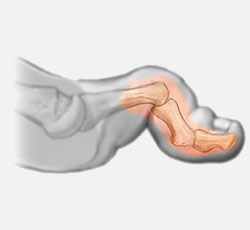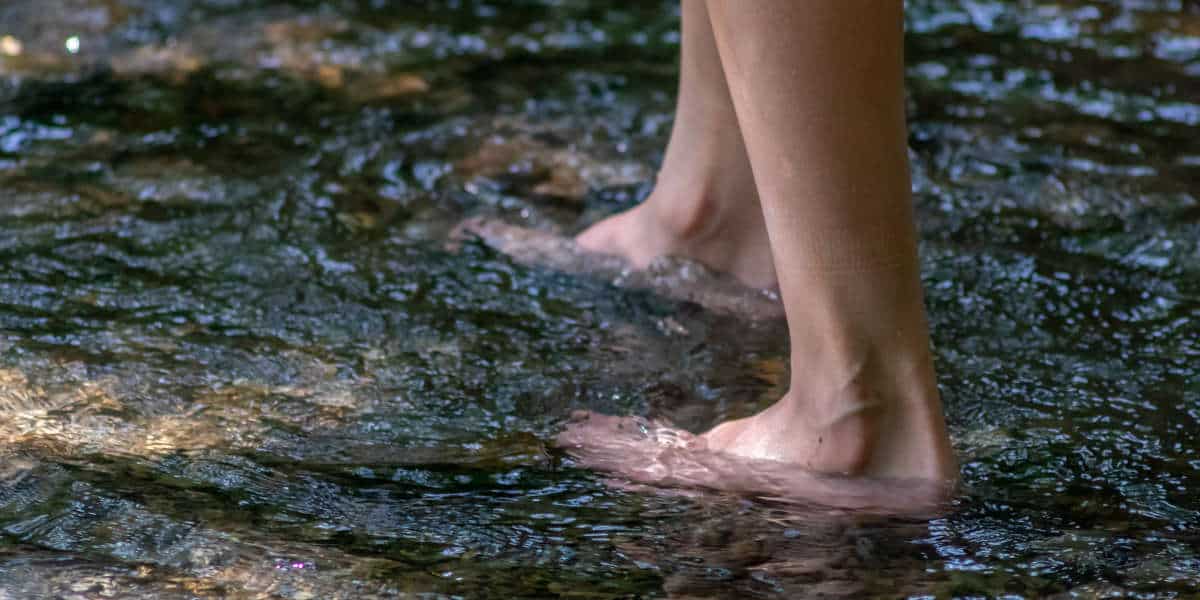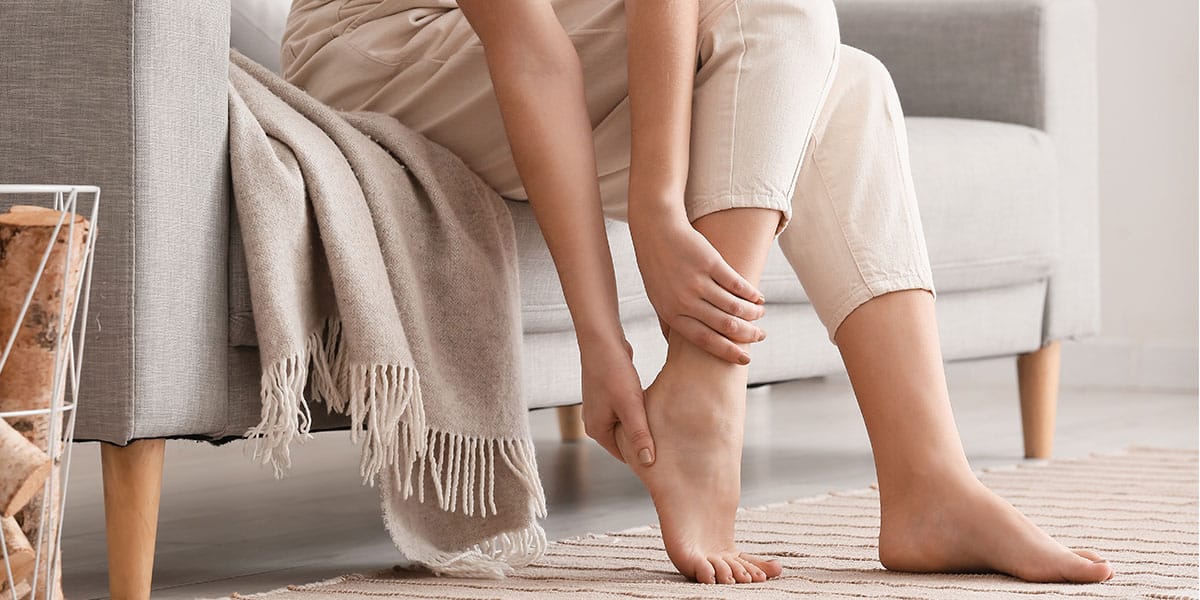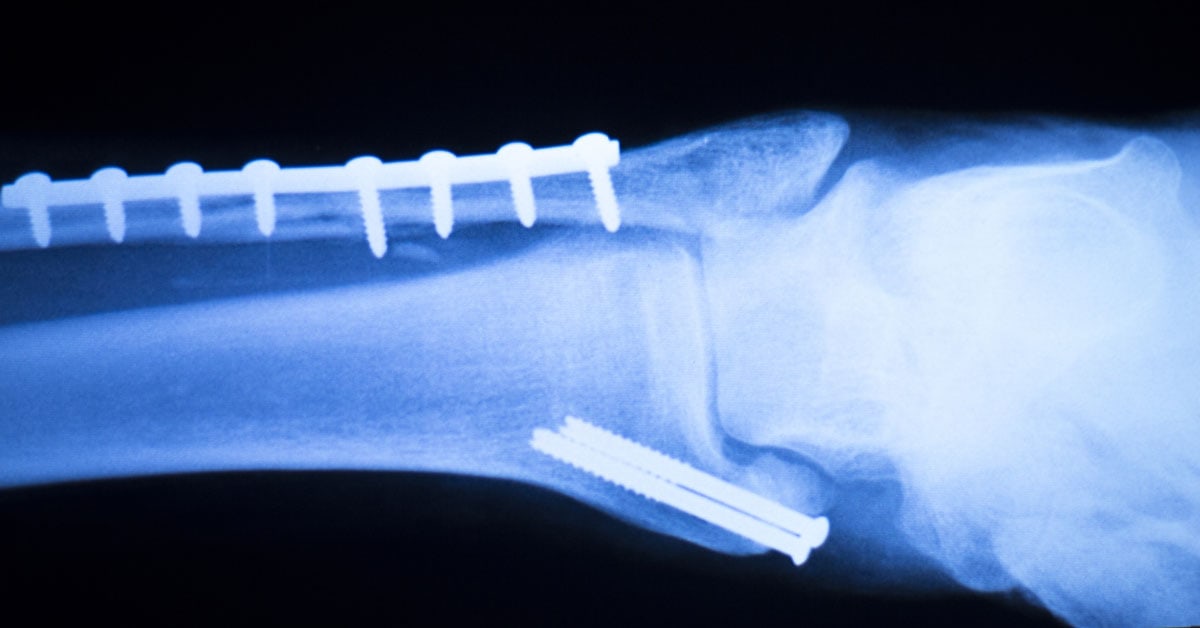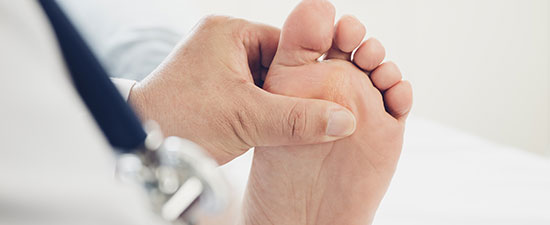- Home
- Foot & Ankle Conditions
- Hammer Toe
Hammer Toe: causes, symptoms and treatments
- Published 6/1/2018
- Last Reviewed 2/12/2025
What's a hammer toe?
A hammertoe occurs when the middle joint of the toe develops an abnormal bend and becomes flexed or bent downward. This is due to a muscle imbalance around the toe joints and usually happens in the second, third, and fourth toes.
This imbalance causes the toe to bend at one or more joints, eventually pushing the middle of the toe upward into a claw-like position.
Unfortunately, a hammertoe causes pain and won’t get better without intervention. The sooner it is treated, the better the outcome and the shorter the recovery.
- What causes a hammer toe?
- Flexible hammertoe vs. rigid hammertoe: what’s the difference?
- What are the symptoms of a hammer toe?
- How is a hammer toe diagnosed?
- What are non-invasive treatment options for hammer toes?
- Surgical treatment options for a hammer toe
- What are the benefits of hammertoe surgery?
- Hammer toe surgery recovery
- Why choose University Foot and Ankle Institute for hammer toe treatment?
- Hammer Toe and Hammer Toe Surgery FAQs
- What are mallet toe and claw toe?
- Are hammertoes the same as corns?
- How is hammertoe treated?
- How does hammertoe surgery affect performance in sports, especially football and running?
- Can hammertoe be treated with surgery?
- What can I expect during my recovery from hammertoe surgery ?
- Can a hammertoe come back after surgery?
-
ABFAS® Board Certified in Foot Surgery and Reconstructive Rearfoot and Ankle Surgery. and Director of University Foot and Ankle Institute
Dr. Bob Baravarian DPM, FACFAS is a Board-Certified Podiatric Foot and Ankle Specialist. He is an assistant clinical professor at the UCLA School of Medicine and serves as Director of University Foot and Ankle Institute.
Dr. Baravarian has been involved in athletics his entire life and played competitive tennis in high school and college. He has an interest in sports medicine, arthritis therapy, and trauma/reconstructive surgery of the foot and ankle. He is also fluent in five languages (English, French, Spanish, Farsi, and Hebrew),
-
ABFAS® Board Certified in Foot Surgery and Reconstructive Rearfoot and Ankle Surgery. and Director of University Foot and Ankle Institute
Dr. Bob Baravarian DPM, FACFAS is a Board-Certified Podiatric Foot and Ankle Specialist. He is an assistant clinical professor at the UCLA School of Medicine and serves as Director of University Foot and Ankle Institute.
Dr. Baravarian has been involved in athletics his entire life and played competitive tennis in high school and college. He has an interest in sports medicine, arthritis therapy, and trauma/reconstructive surgery of the foot and ankle. He is also fluent in five languages (English, French, Spanish, Farsi, and Hebrew),
Learn More from our Hammer Toe Blog Articles
 I love this practice. My experience at UFAI Institute has always been good. I have been a patient for almost a decade and as a ...Daniel J.
I love this practice. My experience at UFAI Institute has always been good. I have been a patient for almost a decade and as a ...Daniel J. Please provide handicap parkingBarry S.
Please provide handicap parkingBarry S. Dr redkar is great she have help me a lot my feet are getting betterLolaex3
Dr redkar is great she have help me a lot my feet are getting betterLolaex3 Dr. Ambibola Johnson is awesome!Laurie S.
Dr. Ambibola Johnson is awesome!Laurie S. I appreciate the care and timeliness of all my appointments I’ve had at UFAI. Gray, Lydia and the staff all are wonderful. Lydi...Edelmira G.
I appreciate the care and timeliness of all my appointments I’ve had at UFAI. Gray, Lydia and the staff all are wonderful. Lydi...Edelmira G. Very greatfull for the doctor and stuffJesus M.
Very greatfull for the doctor and stuffJesus M. Doctor was very caringBrigitte S.
Doctor was very caringBrigitte S. If you are looking for a foot Dr.Carter takes his time to hear your concerns about your feet and he is very knowledgeable and p...Emma L.
If you are looking for a foot Dr.Carter takes his time to hear your concerns about your feet and he is very knowledgeable and p...Emma L. Everyone is very nice and efficient-
Everyone is very nice and efficient-
Especially Dr Kelman. He takes very good care of me!!Claudia K. Great costumer service.
Great costumer service.
Prompt and efficientDean W. No . I’m pleased with the care .Michael P.
No . I’m pleased with the care .Michael P. Appreciate the professionalism and expertise, as well as the caring.Stella G.
Appreciate the professionalism and expertise, as well as the caring.Stella G.
